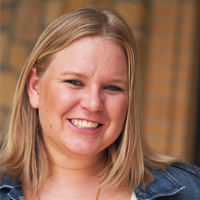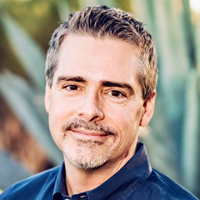
As the COVID-19 pandemic continues, weariness proliferates throughout higher education. Staff, faculty, and administrators face challenge after challenge: meeting CDC health guidelines, moving classes online, and handling technology-related stresses brought about by the drastic, immediate shift to virtual learning. March 2020 saw many emails to faculty announcing the move to 100 percent remote classes for the remainder of the term. Shifting Communication courses online takes careful planning in the best of times, but with little time to prepare, it can be stressful to learn new technology, adjust curriculum, and shift assignments. As the months went by, the pandemic began to impact more than just teaching modalities. A recent study of Ecology and Evolutionary Biology faculty indicates that “…the Covid-19 pandemic has been perceived to have substantial negative impacts on all academic activities” (Aubry et al., 2020). From service, research, and tenure to mentoring, teaching, and publishing, COVID-19 has filtered into every crevice of academia.
Faculty are doing their best, but meeting these challenges can be difficult, especially when many students would rather be learning in person. The OCFUA (Ontario Confederation of University Faculty Associations) found in a November 2020 report that “…university students and faculty agree that the adjustments to course delivery and campus life compelled by the onset of the Covid-19 pandemic have had an overall negative impact on both the quality of education and students’ general educational experience.” Developing a high-quality virtual curriculum for students, yet facing the reality that it most likely won’t measure up to pre-pandemic standards, can be daunting. Facing one complication, solving it, and then confronting another issue has been the new status quo for most educators during the pandemic. It probably feels like Sisyphus—pushing the boulder up the hill, only to wind up right back down at the bottom, pushing that boulder up yet again. The number of pressures feels infinite, including worries about research timelines; student access and equity; child or elder care; technological difficulties; funding; student evaluations; publishing deadlines; enrollment; tenure-track worries; service meetings; and Zoom fatigue. Each of these concerns can be draining; encountering all of them at once can lead to faculty burnout.
Adjusting to a New Normal
Although some faculty returned to the classroom for the Fall 2020 term, it was a different playing field, with some classes literally being held on the playing field, as several institutions incorporated outdoor classrooms. New restrictions and guidelines had many faculty seeking support from Facebook groups such as “Pandemic Pedagogy,” which boasted more than 32,000 members by December 2020. The group description reads: “Educators, students, and others share insights, best (and worst) practices, advice, successes, challenges, and research about converting to fully remote/online instruction during the coronavirus (Covid-19) pandemic.” The need for spaces for faculty to connect, share, and seek help suggests that there are highly abnormal issues facing the academy.
While the literature is still forthcoming regarding the toll COVID-19’s presence has taken and will continue to take on campuses, a November 2020 Chronicle of Higher Education article notes that “Burnout is a problem in academe even in the best of times. Shrinking budgets, growing workloads, and job insecurity in a profession where self-sufficiency is both expected and prized put many faculty members at risk before Covid-19 placed higher education on even shakier footing” (McMurtrie, 2020). It’s hard to keep going, to keep pushing that boulder, when the hill seems impossible to climb and little respite is in sight. Academia can be a high-stress job that often demands peak performance, but piling on the eternal worry and strain from the effects of COVID-19 may have led to a deeper weariness in the body and the mind.
The editor of the Irish Medical Journal suggests that “…the initial enthusiasm and eagerness to tackle the crisis is replaced by feelings of exhaustion. In physiology terms, it is the point at which we have moved from acute to chronic stress. The adrenaline is running out. Both those on the front line and those behind the scenes are affected… the pandemic has become a marathon rather than a sprint” (Murphy, 2020). Whether behind the scenes or on the front line in the physical classroom, “COVID fatigue” is a weariness that faculty might be subconsciously, or even consciously, wearing. The emotional strain of this time in our history has caused considerable stress across the world of academia.
Stress and the Faculty Experience
Even in the best of times, stress is endemic to the faculty experience. Faculty members endure both external and internal pressures to publish, provide service, and innovate that are not extinguished even by a global pandemic. Many faculty members can attest that their work weeks are not limited to a 40-hour schedule; instead, evenings, weekends, and holiday breaks are commonly used to catch up with grading, writing, reviewing, committee work, curriculum development, and other professional activities. Although multiple colleges and universities have relaxed timelines for tenure decisions and pre-tenure reviews during the coronavirus pandemic, self-imposed expectations to excel at teaching, research, and service continue, resulting in a chronic level of stress.
Stress is not inherently problematic. Some forms of stress can, in fact, equip the mind and body to respond effectively to perceived environmental threats. For example, the stress of a looming deadline can motivate one to work on a paper or project, and the stress of imagining oneself as unprepared in the classroom can motivate preparation activities. Researchers use the term eustress to describe the type of stress that leads to constructive behaviors and positive outcomes.
Eustress is distinguished from distress, which is anxiety provoking, difficult to cope with, and hampers our ability to function effectively. Whereas the stress of a looming deadline can motivate one to work on a project (which would constitute eustress), it can also provoke excessive worry, prompt unrealistic, perfectionist expectations, and lead to procrastination or resignation (which would constitute distress). Unlike eustress, distress—particularly when it is chronic rather than short-term—contributes to a wide range of mental and physical health problems. For example, chronic stress can exacerbate psychopathologies such as anxiety, depression, psychosis, and PTSD. It can also aggravate physical health conditions such as heart disease, diabetes, obesity, Alzheimer’s disease, and asthma.
At a time when the normal stresses of academia are magnified, how can faculty members cope successfully?
Carving a Way Forward
A key to managing stress constructively is remembering that it is always a reaction to something. A threatening situation (called a stressor) presents itself, and stress is our response. In normal circumstances, we can improve our circumstances either by reducing or eliminating the stressor or by modifying our response. While social distancing and vaccination work to stem the tide of COVID-19, faculty can individually carve a way forward by using patience and compassion to modify their own stress reactions.
It has perhaps become cliché during the pandemic to say that “it’s okay not to be okay,” but there is wisdom in that trope. This is a time when giving oneself a break—and extending the same courtesy to others—has real value for keeping the stress response in check. It’s important for faculty members to pay attention to our health, stress levels, worries, and COVID-19-related hardships. The demands are hard right now, and practicing self-compassion is one way to help ease the weariness that so many of us are feeling.
Cynthia Phelps is an international speaker, researcher, coach, and founder of InnerAlly, who uses the science of self-compassion to create tools and to help people be kind to themselves. According to Phelps, “Covid-19 has brought with it many levels of suffering, from sickness, and financial losses, to isolation and depression. One of the most important things we can do for ourselves when we are suffering, struggling, or merely frustrated is to be kind to ourselves with our words. This regular practice is associated with lower levels of depression, stress, and anxiety.” Noticing when suffering arises within you and allowing a kind and soothing inner response is a way to practice self-compassion, in contrast to responding by being harsh or critical with yourself.
The self-compassion we cultivate transfers to how we interact with staff, other faculty, and students. Now more than ever, it is important to be patient with those around us. Phelps notes that “Faculty, just like all of us, are feeling the stress and anxiety of the pandemic, which makes patience more challenging to practice. One very practical way to practice self-compassion is to not compare or judge our own suffering. The human body experiences stress and anxiety physically. On some level we know that losing a loved one to Covid-19 is more traumatic than, say, being stressed about the future. But our bodies process these things in a similar way. So instead of dismissing your own suffering because ‘other people have it worse,’ self-compassion gives you permission to notice your own suffering, and then take action to be kind to yourself.”
Although we may not have a solution to this weariness of teaching and living during a pandemic, we can practice self-compassion with ourselves and patience with others. For more resources on these topics, please visit these sites:
- https://resilienteducator.com/collections/covid19/
- www.InnerAlly.com
- Self-Compassion dot org
- greatergood dot berkeley dot edu / topic / compassion
References
Aubry, L. M., Laverty, T. M., & Ma, Z. (2020). Impacts of COVID-19 on ecology and evolutionary biology faculty in the United States. Ecological Applications. Advance online publication. https://doi.org/10.1002/eap.2265
McMurtrie, B. (2020, November 5). The pandemic is dragging on. Professors are burning out. The Chronicle of Higher Education. https://www.chronicle.com/article/the-pandemic-is-dragging-on-professors-are-burning-out
Murphy, J. F. A. (2020). Pandemic fatigue. Irish Medical Journal, 113(6), 90-91.
Ontario Confederation of University Faculty Associations. (2020, November). OCUFA 2020 study: COVID-19 and the impact on university life and education. https://ocufa.on.ca/assets/OCUFA-2020-Faculty-Student-Survey-opt.pdf
ABOUT THE AUTHORS


KORY FLOYD is a Professor of Communication and Professor of Psychology at the University of Arizona. Floyd’s research focuses on the communication of affection in close relationships and its effects on stress and physiological functioning. Floyd has written 16 books and more than 100 scientific papers and book chapters on the topics of affection, emotion, family communication, nonverbal behavior, and health. Floyd is a Fellow of the International Communication Association and a former Editor of Communication Monographs and the Journal of Family Communication. The National Communication Association has recognized Floyd’s work with the Mark L. Knapp Award in Interpersonal Communication, the Bernard J. Brommel Award for Outstanding Scholarship or Distinguished Service in Family Communication, and the Charles H. Woolbert Research Award.

